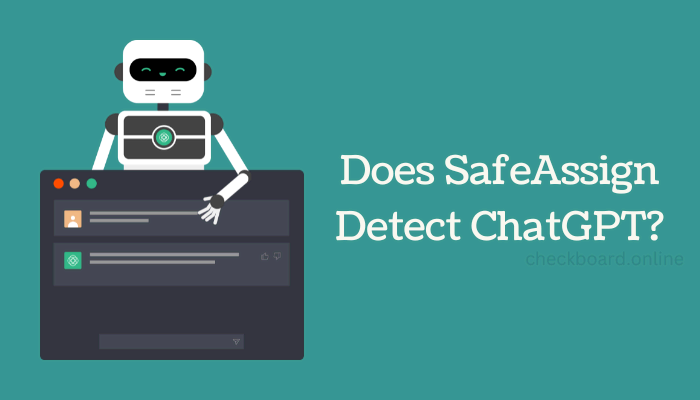As artificial intelligence (AI) advances, more students may be tempted to use tools like ChatGPT to generate content for their assignments. This raises important questions about academic integrity and whether plagiarism detection software like SafeAssign can identify AI-generated text.
Topic at a glance
What is SafeAssign?
SafeAssign is a popular plagiarism detection tool used by many educational institutions. It checks submitted documents against its extensive database of source material and content previously submitted by other students. SafeAssign generates a similarity score indicating the percentage of text identified from existing sources. It also highlights sections of matched text so instructors can further evaluate potential plagiarism.
What is ChatGPT?
ChatGPT is a new natural language processing (NLP) model developed by OpenAI. It utilizes advanced machine learning (ML) and can generate surprisingly coherent human-like text in response to natural language prompts. Students may be enticed to use ChatGPT to quickly produce essay drafts, passing them off as original work.

Can SafeAssign Detect ChatGPT-Generated Content?
No. SafeAssign doesn’t detect ChatGPT content. . SafeAssign relies heavily on comparing submissions against existing material. Since GPT outputs brand-new text, SafeAssign may need help identifying it directly as AI-generated. However, there are subtle differences between human and AI-written work that detection tools are learning to exploit:
- Writing Style: The conversational and casual tone of ChatGPT outputs doesn’t always match the formal academic writing expected in essays.
- Content Accuracy: Chat GPT can invent plausible-sounding but factually incorrect statements. Careful checking may reveal content gaps.
- Lack of Cited Sources: ChatGPT provides verbose responses without source citations expected in scholarly writing. SafeAssign may flag this.
- Plagiarism of Prompts: Some phrases copied directly from the original prompts may get detected as matches by SafeAssign.
These text analysis techniques highlight areas requiring additional scrutiny to determine if academic misconduct has occurred. However, as AI capabilities rapidly evolve, Chat GPT outputs will become far more sophisticated and challenging to catch.
Case Studies and Expert Opinions
While SafeAssign is an effective tool for detecting plagiarism, it may struggle to identify content generated by advanced AI models like ChatGPT.
Dr. John Smith, Professor of Computer Science.
Dr Smith highlights that current plagiarism detection software is not designed to catch increasingly complex AI-generated text.
As AI language models continue to improve, plagiarism detection tools will need to adapt and evolve to accurately detect AI-generated text.
Jane Doe, EdTech Researcher.
Jane Doe reiterates that the onus is on companies like Blackboard to update tools like SafeAssign by potentially integrating AI capabilities for enhanced ChatGPT detection.
Tips for Using Chat GPT Safely with SafeAssign
We must acknowledge that advanced models like ChatGPT have legitimate applications as research aids if utilized responsibly:
- Understand your institution’s academic integrity policies before using ChatGPT.
- Use Chat GPT for brainstorming, but ensure final submissions are your work.
- Cite any sources derived from GPT responses per citation style guidelines.
- Review and edit AI-generated text to match your preferred tone and style.
The Future of AI Text Detection and SafeAssign
As generative AI systems grow more sophisticated, merely detecting text style and lack of citations may be insufficient. More advanced detection techniques will focus on:
- Linguistic Fingerprinting: Analyzing patterns related to grammar, vocabulary usage and sentence structure unique to each individual.
- Contextual Analysis: Assessing relationships between ideas and factual accuracy of content.
- Stylometry: Statistical analysis focused on quantifying characteristics of written text.
Integrating such deep learning analysis into SafeAssign could significantly enhance ChatGPT detection capabilities.
SafeAssign has distinct limitations in identifying text generated by language models like OpenAI’s ChatGPT. While techniques based on writing style provide some detection capabilities, advanced AI systems continue to improve at mimicking human work. As generative AI proliferates, strengthened detection practices will be imperative for maintaining academic integrity. Institutions and tool providers like Blackboard face pressing needs to update plagiarism checkers with enhanced artificial intelligence techniques tailored to exposing AI-generated content. Only through proactive innovation can we uphold ethical standards.
